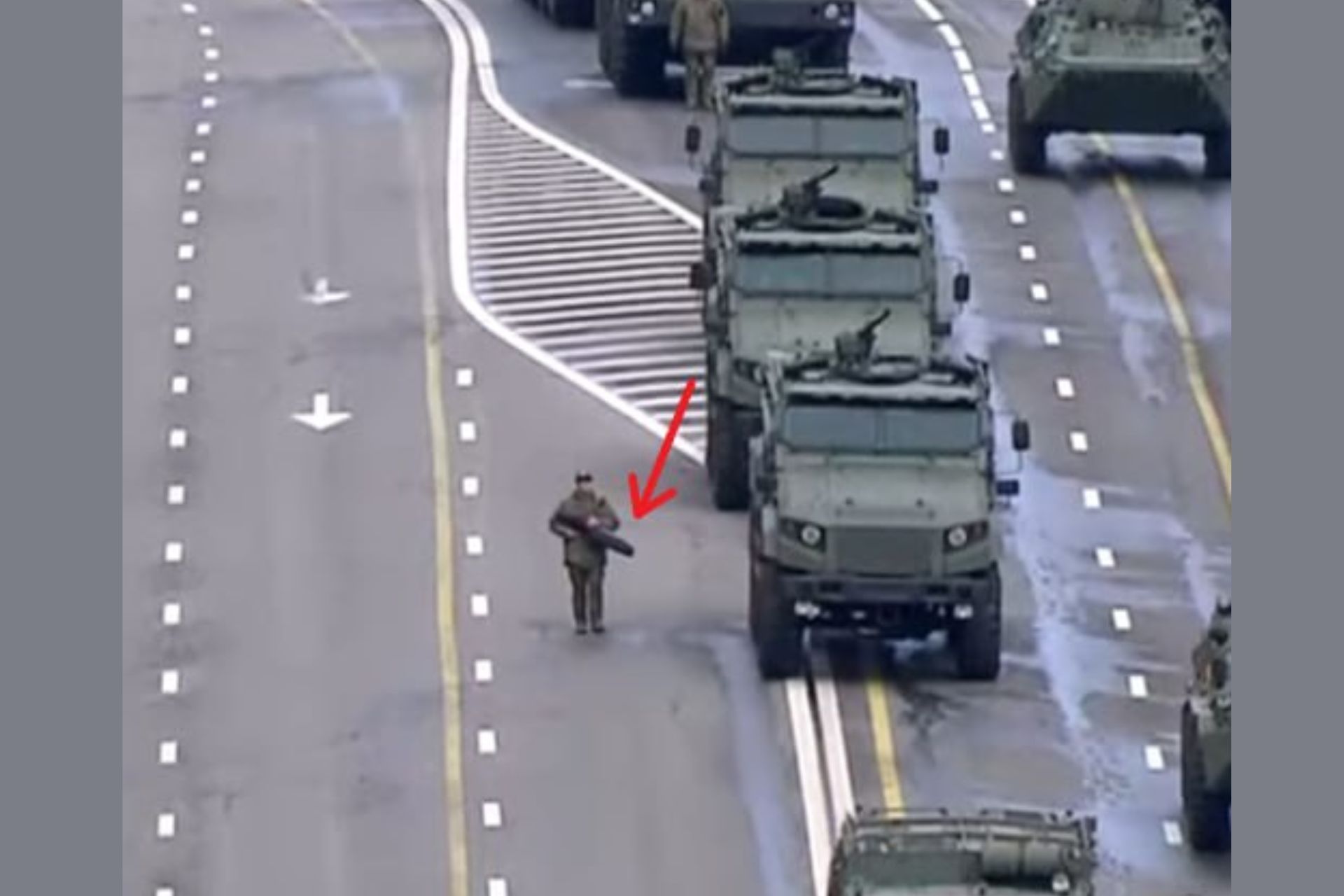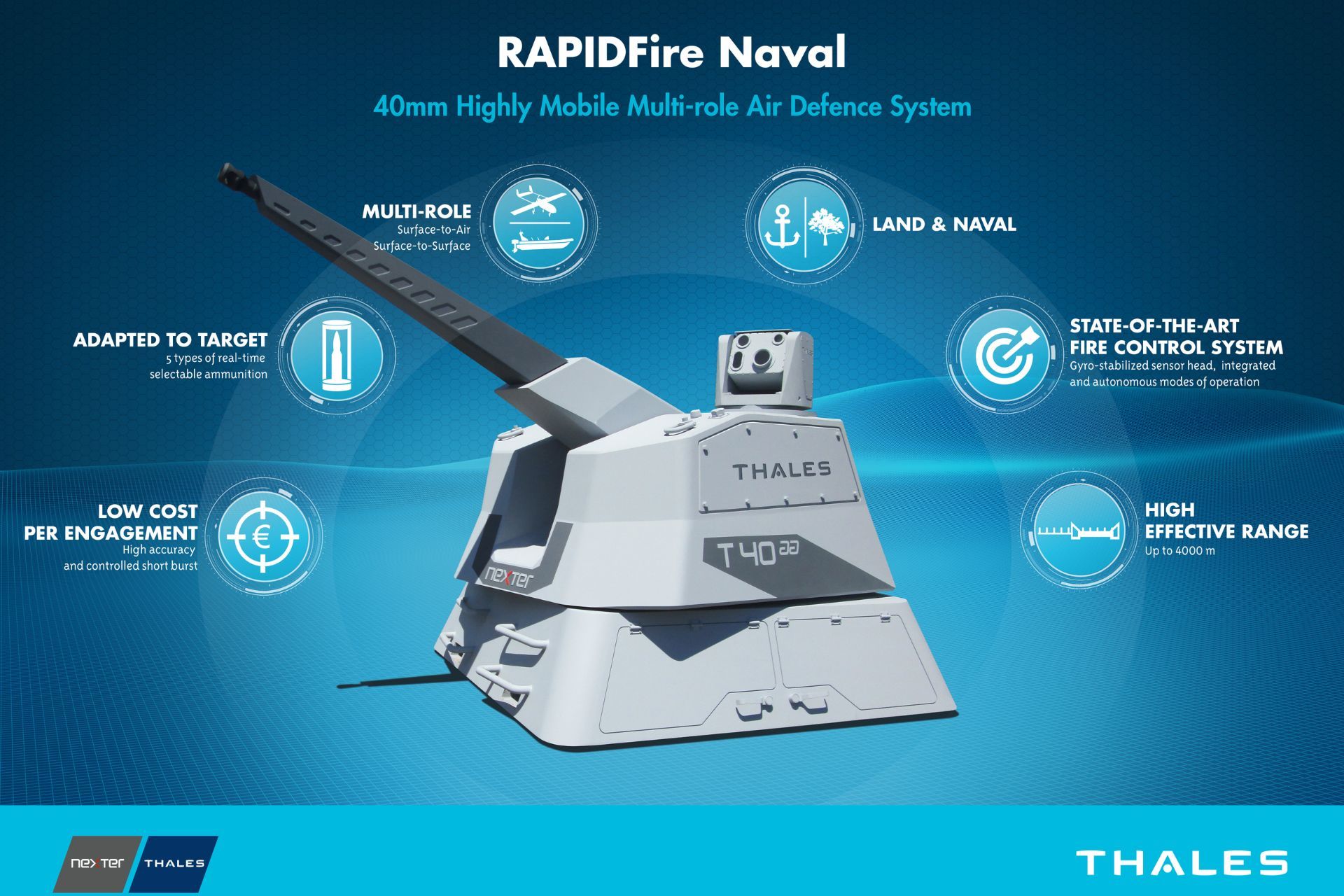Breaking news
Analysis: Russian soldier shots with 12 gauge a drone sign of a lack of counter drone system ?.
A Russian soldier shot down a Ukrainian drone at long distance with a 12-gauge shotgun, a lucky success born out of desperation. This unusual wartime event highlights the importance of anti-drone warfare, which is becoming a significant battlefield issue today. However, before anti-drone warfare became more standardized, there were some rather haphazard attempts.
Follow Army Recognition on Google News at this link

Russian soldier shots down a Ukrainian UAV -full video at the end of article (Picture source: Telegram channel )
Classic drone control
Conventional drone control can be divided into two main categories: passive and active. Passive drone control uses non-offensive elements such as cope cages, anti-drone grids and nets.
Cope cages, made up of fine-mesh mesh, are really geared to anti-drone bomber combat. As is the use of militarized civilian drones in the Ukraine conflict. The Ukrainians use small civilian drones to launch grenades or larger explosives.
The Russians have invented an evolution to these cages: for several weeks now, tanks equipped with mine-clearing devices have been reinforced with a structure made of töle, wire mesh or metal parts covering the entire tank. These tanks have been dubbed turtle tanks. However, although initially effective to some extent, the psychological aspect of using such a structure on the front lines.
Camouflage nets, on the other hand, play on the visual aspect of the vehicle or the position to be concealed, but do not really offer protection against the effect of drones. However, these passive solutions are often disposable, as their use implies their destruction.

Ukrainian Brigade presented an upgraded version of M1A1 Abrams (Picture source: 47th mech brigade )
active counter-measure
Jammers
Jammers are the most commonly used method during conflicts, in the form of anti-drone rifles or electronic jammers. Jammers, which can be GPS or radio frequency, are effective tools against drones. Their purpose is to cut the link between the drone and its pilot, typically causing the drone to fall. Although initially less effective, this method has proven more effective with technological advancements, despite existing countermeasures like loitering munitions equipped with AI. However, the limitation of this system is its cost, making it less widespread.
Laser Weapons
Laser weapons are even more expensive but very promising. These systems are starting to be deployed, with many armament programs funding these technologies. The General Directorate of Armament (DGA) has launched a new project for the acquisition of a deployable modular anti-drone protection system (PARADE). The program involves an investment of €350 million over 11 years (including €70 million for the 2022-2025 period). This comprehensive system aims to provide permanent protection for military or civilian sites in France or in external theaters of operations. It must include an evolving C2 system, a radar, a goniometer, an optronic system, and a jamming system. The system must ensure automatic detection, characterization, identification, and neutralization of drones, day or night, and in all weather conditions, against drones emitting or not emitting electromagnetic waves. In the PARADE system, the laser will serve as a neutralization element in extreme urgency. For this purpose, the French SME CILAS has developed the HELMA-P system. The laser is mounted on a fixed or mobile turret (naval or land vehicle). It consists of a box mounted on a tripod containing a drone detection system, a tracking system, and a 2-kilowatt laser capable of neutralizing a drone within seconds up to one kilometer away. The laser burns or blinds the drone, preventing it from navigating. Highly precise and effective, it can detect small drones (less than 100 kg) up to 3 km away and destroy multiple drones in succession. Moreover, this anti-drone solution is resistant to jamming, but its use requires good weather conditions. This system aims to eventually equip vehicles of the Scorpion program.
Anti-Drone Missiles
The final point in active protection is similar to the active protection system that equips armored vehicles. It involves a radar detector that confirms the threat posed by the drone, followed by a hardkill system that neutralizes the drone by firing a missile. Both the Russians and Americans have developed such systems.

Russian soldier spotted during 9th May parade with an Anti-drone rifle ( directed Jammer) (Picture source: Telegram channel )
Exceptional Anti-Drone Efforts
Shotgun Usage
The 12-gauge shotgun is frequently used for various purposes by the military, often considered more of a tool than a weapon. Its variety of ammunition allows it to breach doors, stop light vehicles, or cover a large area with a spread of pellets. Consequently, the Belgians and French have experimented with using this tool, already in use by conventional and non-conventional forces, for anti-drone efforts. France uses standard-issue weapons as an effective means against aviation. In a video published on the Army's YouTube channel, anti-drone efforts are shown using a Browning M2 12.7 caliber machine gun.
Rapid Fire Project
In 2023, the RAPIDFire turret, a 40 mm rapid-fire cannon, will equip the Navy's force replenishment vessels (BRF). Developed by Nexter and Thales, it is capable of successively engaging multiple targets. Unlike American C-RAM systems, the RAPIDFire seeks precision rather than saturating an area with projectiles. Equipped with gyro stabilizers, autonomous calculations, and a selection of munitions adapted to the threat, it guarantees near-success with each shot.

Rapid fire turret on naval configuration presented by Thales (Infography source: Thales )
Anti-Drone Eagles
In France, the Air and Space Force quickly sought to protect its infrastructure from the civilian drone threat, leading to an experimental project involving eagles. The military trained and deployed eagles to intercept and destroy drones entering no-fly zones. The project was also tested by Switzerland and the Netherlands, both of which terminated the project due to the risks posed to the animals and humans below.
Conclusion: which future for anti-drone system
In the field of anti-drone warfare, the most advanced countries are the United States and Israel, according to the Ministry of Defense. Since 2017, the U.S. military has been developing a rather remarkable anti-drone system. The Mobile Force Protection Program was created to protect "high-value" convoys. This system initially detects malicious drones using an X-band radar (ultra-high frequency). Then, artificial intelligence software attempts to identify the intentions of the aircraft. If it poses a threat, the second part of the system comes into play: a tube-shaped interception drone which, by firing streamers into the propellers of the threatening drone, causes it to fall. Fired from a moving vehicle, the interception drones can be reused. In Israel, by 2024, the military should have a ground-based system capable of shooting down rockets and drones. This involves an airborne laser, successfully tested at an altitude of 900 meters and within a one-kilometer radius. The military wants to refine the laser to intercept a drone up to 20 km away. To resume, humans won't be removed but technology aims to be autonomous.
Video: Russian soldier destroying a ukrainian drone with 12 gauge rifle:


























